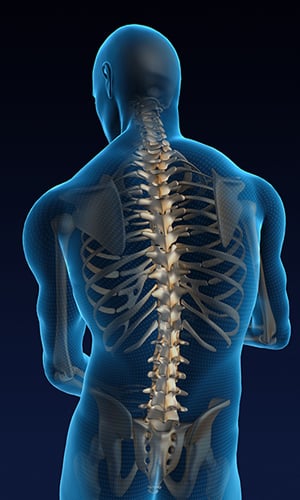Anyone suffering from a spinal cord injury will hear the terms spinal cord and spinal column quite often. And while they may sound similar, understanding their differences can go a long way toward helping you understand their unique roles in your injury.
To the uninitiated, the phrases “spinal column” and “spinal cord” may appear to reference the same part of the body. And while both are critical in enabling proper functioning of the body, the differences between them are quite pronounced.
In short, the spinal column is bones. The spinal cord is nerves.
The spinal column, or spine, as it is most commonly called, is the connected and stacked column of bones running from the base of your skull to your lower back. A single bone is called a vertebra; and multiple bones are called vertebrae. These vertebrae are the building blocks of the spinal column and serve several key functions.
First and foremost, they protect and support the spinal cord, which is essential to your brain to deliver messages to the rest of your body. But they also serve to bear the majority of the weight of your body.
In contrast, the spinal cord is a fragile, dense bundle of nerves that also runs from the base of your brain but down and through an open space in each of the vertebrae. As a key part of your body’s nervous system, your spinal cord is the nerve pathway that enables your brain and your body to communicate with one another.
Branching off of the spinal cord are 31 pairs of spinal nerves, which match the number and location of the vertebrae nearest to where they exit the spine, and then branch off into the many nerves that spread out into your body. It is this system that enables the body and the brain to exchange signals necessary to function properly.
When high-impact events occur, damaging the vertebrae of the spinal column, they often damage the spinal cord, thereby reducing the ability of the brain and the rest of the body to communicate.









